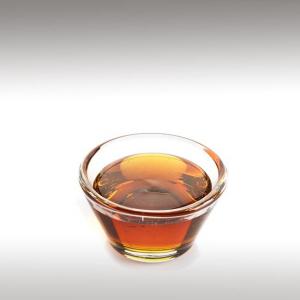
MAPLE SYRUP - INGREDIENTS

BASE / GENERAL DATA
Information submited: June 23, 2015 Modified: May 30, 2018 By: OperaDreamhouse
Maple Syrup is a Syrup usually made from the Xylem Sap of Sugar Maple, Red Maple, or Black Maple trees, although it can also be made from other maple species.
Three species of maple trees are predominantly used to produce Maple Syrup: the Sugar Maple (Acer Saccharum), the Black Maple (Acer Nigrum), and the Red Maple (Acer Rubrum), because of the high sugar content (roughly 2 - 5%) in the sap of these species.
Three species of maple trees are predominantly used to produce Maple Syrup: the Sugar Maple (Acer Saccharum), the Black Maple (Acer Nigrum), and the Red Maple (Acer Rubrum), because of the high sugar content (roughly 2 - 5%) in the sap of these species.
The Black Maple is included as a subspecies or variety in a more broadly viewed concept of Acer saccharum, the sugar Maple, by some botanists. Of these, the Red Maple has a shorter season because it buds earlier than sugar and Black Maples, which alters the flavour of the sap.
The Canadian province of Quebec is by far the largest producer, responsible for about three - quarters of the world's output.
Vermont is the largest producer in the United States, generating about 5,5% of the global supply.
In cold climates, these trees store starch in their trunks and roots before the winter, the starch is then converted to sugar that rises in the sap in the spring.
Maple trees can be tapped by boring holes into their trunks and collecting the exuded sap. The sap is processed by heating to evaporate much of the water, leaving the concentrated Syrup.
In Canada, syrups must be at least 66% sugar and be made exclusively from Maple sap to qualify as Maple Syrup. In the United States, a syrup must be made almost entirely from maple sap to be labelled as "Maple".
Maple Syrup was first collected and used by the indigenous peoples of North America. The practice was adopted by European settlers, who gradually refined production methods. The Canadian province of Quebec is by far the largest producer, responsible for about three - quarters of the world's output.
Indigenous peoples living in the northeastern part of North America were the first groups known to have produced Maple Syrup and Maple sugar. According to aboriginal oral traditions, as well as archaeological evidence, Maple tree sap was being processed into syrup long before Europeans arrived in the region.
The Algonquians recognized Maple sap as a source of energy and nutrition. At the beginning of the spring thaw, they used stone tools to make V - shaped incisions in tree trunks. They then inserted reeds or concave pieces of bark to run the sap into buckets, which were often made from birch bark. The Maple sap was concentrated either by dropping hot cooking stones into the buckets or by leaving them exposed to the cold temperatures overnight and disposing of the layer of ice that formed on top.
Aboriginal tribes developed rituals around sugar - making, celebrating the Sugar Moon (the first full moon of spring) with a Maple Dance.
Maples are usually tapped beginning at 30 to 40 years of age. Each tree can support between one and three taps, depending on its trunk diameter. The average maple tree will produce 35 to 50 litres of sap per season, up to 12 litres per day.
Maples can continue to be tapped for sap until they are over 100 years old.
Chemical structure:
It consists primarily of Sucrose and Water, with small amounts of the monosaccharides glucose and fructose from the invert sugar created in the boiling process.Accordingly, sugars comprise 90% of total carbohydrates which contribute nearly all of the 261 calories per 100 g.
Maple Syrup generally is devoid of micronutrient content , excepting appreciable amounts of zinc and manganese which contribute 44% and 157% of the Daily Value, respectively, per 100 g.
100 grams of Maple Syrup contain:
Calcium: 7%
Potassium: 6%
Iron: 7%
Zinc: 28%
Manganese: 165%
Maple Syrup also contains trace amounts of amino acids which increase in content as sap flow occurs. Additionally, Maple Syrup contains a wide variety of volatile organic compounds, including Vanillin, hydroxybutanone, and propionaldehyde.
It is not yet known exactly what compounds are responsible for Maple Syrup's distinctive flavour, however its primary flavour contributing compounds are Maple furanone, Strawberry furanone, and Maltol.
The Canadian province of Quebec is by far the largest producer, responsible for about three - quarters of the world's output.
Vermont is the largest producer in the United States, generating about 5,5% of the global supply.
In cold climates, these trees store starch in their trunks and roots before the winter, the starch is then converted to sugar that rises in the sap in the spring.
Maple trees can be tapped by boring holes into their trunks and collecting the exuded sap. The sap is processed by heating to evaporate much of the water, leaving the concentrated Syrup.
In Canada, syrups must be at least 66% sugar and be made exclusively from Maple sap to qualify as Maple Syrup. In the United States, a syrup must be made almost entirely from maple sap to be labelled as "Maple".
Maple Syrup was first collected and used by the indigenous peoples of North America. The practice was adopted by European settlers, who gradually refined production methods. The Canadian province of Quebec is by far the largest producer, responsible for about three - quarters of the world's output.
Indigenous peoples living in the northeastern part of North America were the first groups known to have produced Maple Syrup and Maple sugar. According to aboriginal oral traditions, as well as archaeological evidence, Maple tree sap was being processed into syrup long before Europeans arrived in the region.
The Algonquians recognized Maple sap as a source of energy and nutrition. At the beginning of the spring thaw, they used stone tools to make V - shaped incisions in tree trunks. They then inserted reeds or concave pieces of bark to run the sap into buckets, which were often made from birch bark. The Maple sap was concentrated either by dropping hot cooking stones into the buckets or by leaving them exposed to the cold temperatures overnight and disposing of the layer of ice that formed on top.
Aboriginal tribes developed rituals around sugar - making, celebrating the Sugar Moon (the first full moon of spring) with a Maple Dance.
Maples are usually tapped beginning at 30 to 40 years of age. Each tree can support between one and three taps, depending on its trunk diameter. The average maple tree will produce 35 to 50 litres of sap per season, up to 12 litres per day.
Maples can continue to be tapped for sap until they are over 100 years old.
Chemical structure:
It consists primarily of Sucrose and Water, with small amounts of the monosaccharides glucose and fructose from the invert sugar created in the boiling process.Accordingly, sugars comprise 90% of total carbohydrates which contribute nearly all of the 261 calories per 100 g.
Maple Syrup generally is devoid of micronutrient content , excepting appreciable amounts of zinc and manganese which contribute 44% and 157% of the Daily Value, respectively, per 100 g.
100 grams of Maple Syrup contain:
Calcium: 7%
Potassium: 6%
Iron: 7%
Zinc: 28%
Manganese: 165%
Maple Syrup also contains trace amounts of amino acids which increase in content as sap flow occurs. Additionally, Maple Syrup contains a wide variety of volatile organic compounds, including Vanillin, hydroxybutanone, and propionaldehyde.
It is not yet known exactly what compounds are responsible for Maple Syrup's distinctive flavour, however its primary flavour contributing compounds are Maple furanone, Strawberry furanone, and Maltol.

SPIRITUAL PRACTISES DATA

MEDICINE / HEALTH DATA

BEAUTY / COSMETICS DATA

FOOD / COOKING DATA
COMMENTS
No comments.


